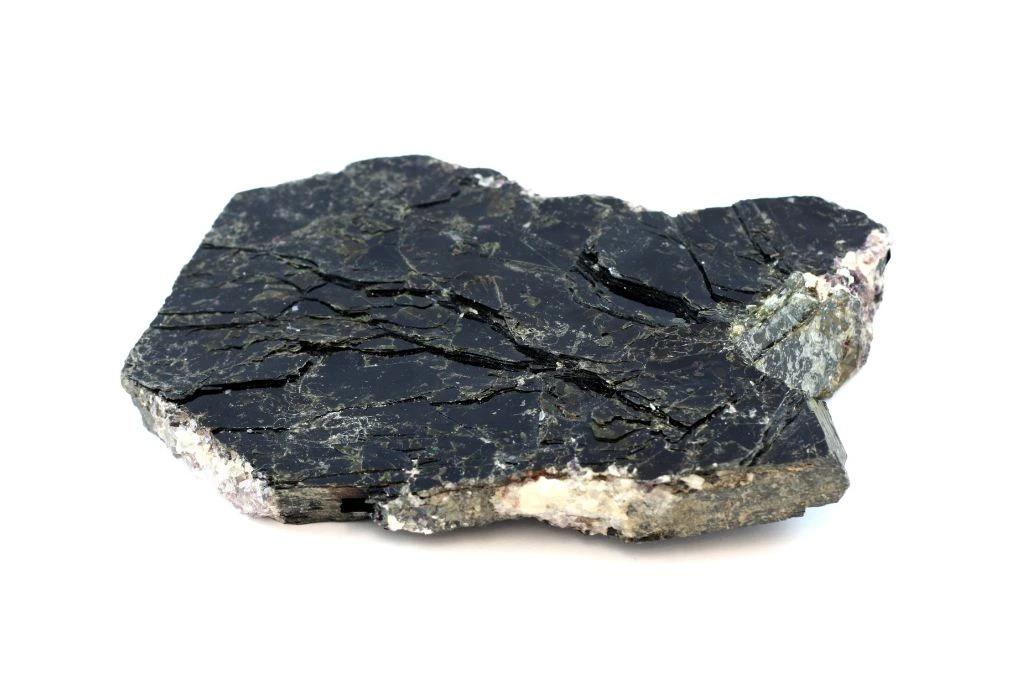Physical Appearance of Biotite
Biotite is a striking mineral that belongs to the mica group, known for its distinct appearance and physical properties. This crystal typically forms in flat, sheet-like structures due to its perfect basal cleavage. The most notable characteristic of biotite is its dark coloration, which can range from deep black to dark brown, with occasional tinges of green or red.
Color Variations
While primarily dark in color, biotite can exhibit a range of hues depending on its chemical composition. Iron-rich varieties tend to be darker, often appearing nearly black, while magnesium-rich specimens may display a more bronzy or greenish tint. Some rare forms of biotite can even showcase golden or silvery sheens, adding to their visual appeal.
Crystal Structure and Texture
Biotite’s crystal structure is composed of thin, flexible sheets that can be easily separated. This layered structure gives the mineral a distinctive texture and allows it to be split into extremely thin, transparent sheets. When viewed under light, these sheets often exhibit a pearly or vitreous luster, contributing to biotite’s eye-catching appearance.
Unique Features
One of the most remarkable aspects of biotite is its perfect cleavage in one direction, which results in its characteristic flaky or scaly texture. This property allows the mineral to be easily identified and distinguished from other similar-looking crystals. Additionally, biotite often forms in large, well-defined crystals, sometimes reaching several centimeters in size, making it a popular choice among mineral collectors and enthusiasts.
Historical and Cultural Significance of Biotite
Biotite, a dark mica mineral, has been used by various cultures throughout history. Ancient civilizations valued it for its shimmering appearance and durability. In some Native American traditions, biotite was used in rituals and ceremonies, believed to connect the physical and spiritual realms. Alchemists in medieval Europe also worked with biotite, associating its dark color with transformative properties.
Metaphysical Associations
In the world of crystal healing and metaphysics, biotite is often linked to grounding and protection. It is believed to help balance one’s energy field and provide a shield against negative influences. Many practitioners associate biotite with the root chakra, suggesting it can aid in feeling more secure and connected to the Earth. Additionally, some claim that biotite enhances psychic abilities and facilitates communication with the spirit world.
Common Uses and Benefits
Biotite finds applications in both traditional and modern contexts. In jewelry making, it is sometimes used as an accent stone, prized for its lustrous black appearance. Crystal enthusiasts often keep biotite specimens in their homes or carry them as pocket stones for their perceived grounding effects. Some alternative health practitioners incorporate biotite into their healing practices, placing it on the body during energy work or using it in crystal grids. In meditation, biotite is thought to enhance focus and promote a deeper connection with the Earth’s energies.
Modern Applications
Beyond its metaphysical uses, biotite has practical applications in various industries. In geology, it serves as an important indicator mineral, helping scientists understand the formation and age of rocks. The construction industry uses biotite in some building materials, while the cosmetics sector sometimes incorporates finely ground biotite into makeup products for its shimmering effect. Researchers are also exploring biotite’s potential in environmental remediation, particularly in the treatment of contaminated soils and water.

